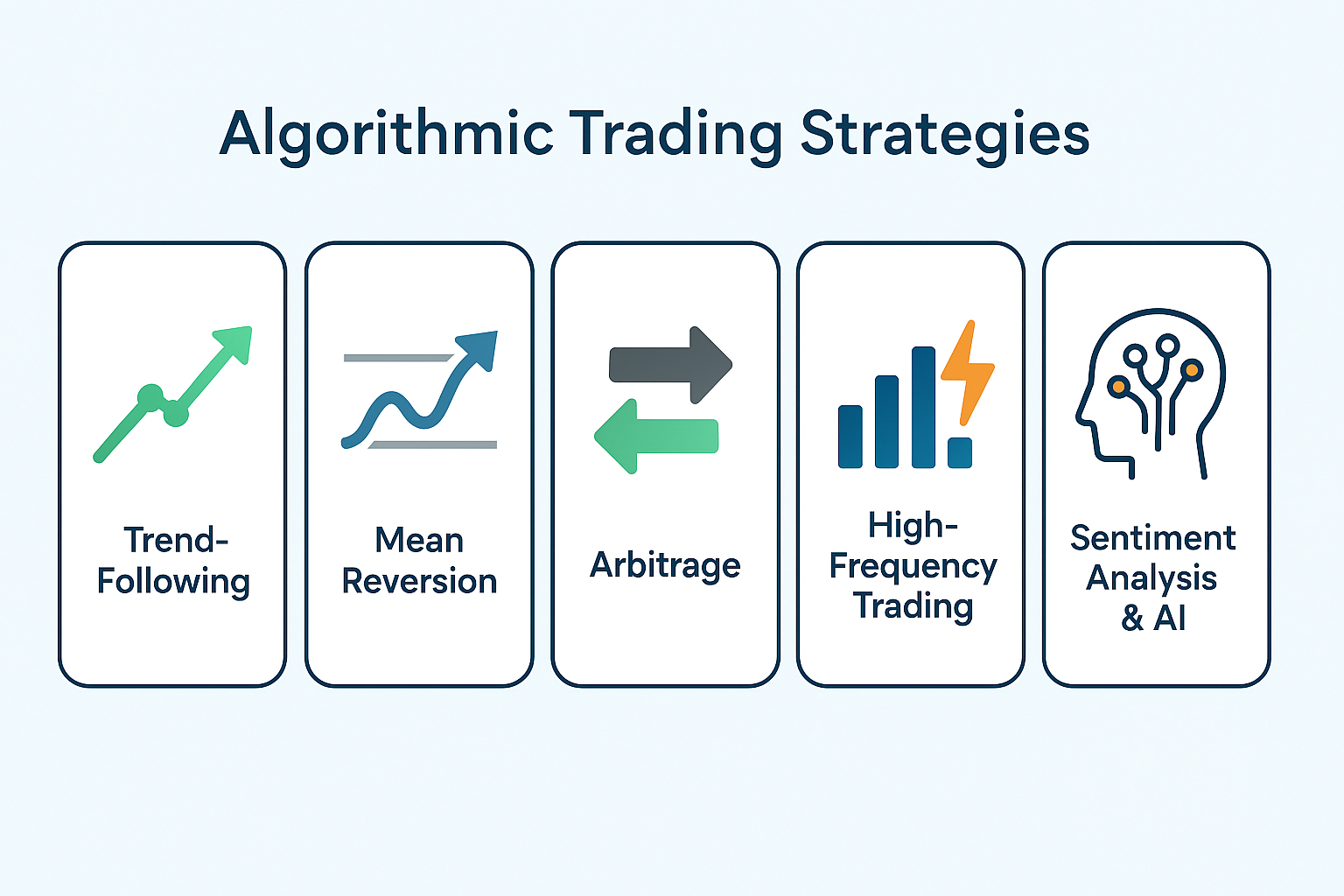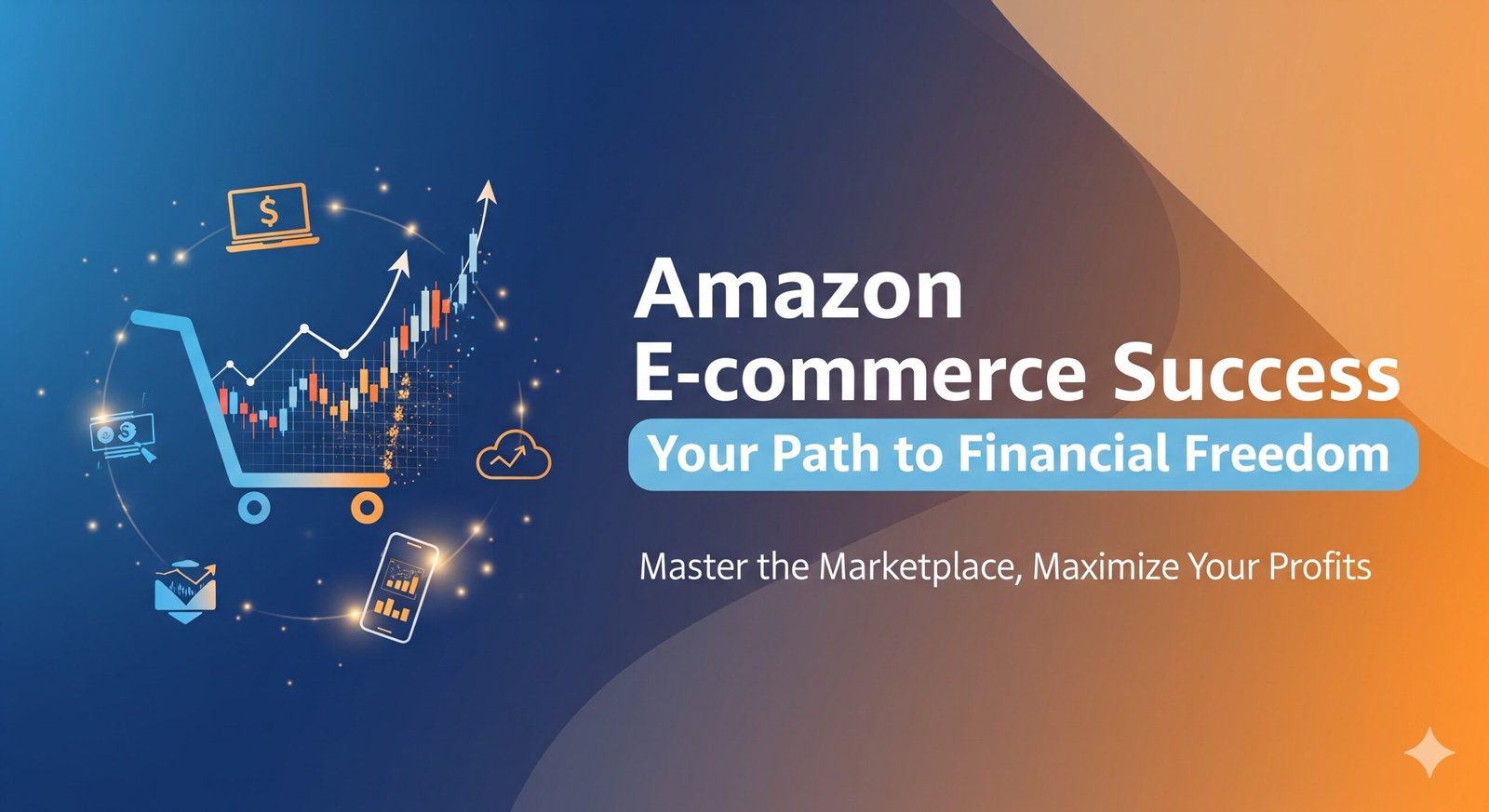1. Introduction
Algorithmic trading, often referred to as algo trading or automated investing, is reshaping the way people approach financial markets. Instead of relying on human intuition to buy or sell assets, algorithmic trading uses computer programs to execute trades based on pre-set instructions—such as price movements, timing, or market volume. These systems can scan vast amounts of data and react in real-time, often within milliseconds.
In recent years, algorithmic trading has become increasingly popular—not only among hedge funds and investment firms, but also among tech-savvy individuals exploring the intersection of finance and automation. The appeal lies in its potential for speed, efficiency, and the removal of emotional bias from decision-making.
Thanks to accessible platforms, open-source tools, and growing interest in fintech, more people are curious about how algorithmic trading works and whether it’s something they can learn. While it offers exciting possibilities, it also introduces new risks, from technical glitches to strategy overfitting.
This article serves as a beginner-friendly guide to help you understand the fundamentals of algorithmic trading. We’ll explain how it works, introduce common strategies, explore the tools involved, and discuss key considerations.
📌 This is an educational article only and does not provide investment advice.
2. What Is Algorithmic Trading?
Algorithmic trading, also known as algo trading or automated trading, refers to the use of computer programs to automatically execute financial transactions based on pre-defined rules. These rules may be driven by price, timing, volume, or even external inputs like economic data or news sentiment. In essence, algorithmic trading replaces manual decision-making with systematic, data-driven processes.
According to the UK Financial Conduct Authority (FCA), algorithmic trading is defined as:
“Trading in financial instruments where a computer algorithm automatically determines individual parameters of orders such as whether to initiate the order, the timing, price or quantity of the order, or how to manage the order after its submission; and there is limited or no human intervention.”
🔗 Source – FCA Glossary
In practice, strategies can range from simple order execution (e.g., splitting a large trade into smaller ones to reduce market impact) to more complex applications like high-frequency trading (HFT), statistical arbitrage, or AI-driven models that evolve over time.
The growth of algorithmic trading has been remarkable. A report by Allied Market Research estimated that the global algorithmic trading market was valued at USD $17.0 billion in 2023, and is projected to reach USD $65.2 billion by 2032, growing at a CAGR of 15.9% over the period.
🔗 Source – Allied Market Research
While algorithmic trading offers many advantages—such as speed, efficiency, and the ability to process vast amounts of data—it also presents challenges. These include technical errors, misbehaving algorithms, and unintended market impacts during high volatility. Therefore, anyone exploring this field should take a balanced, informed approach and understand both the opportunities and limitations.
📌 Disclaimer: This article is for educational purposes only and does not constitute financial advice.
3. How Does Algorithmic Trading Work?
At its core, algorithmic trading works by following a set of pre-programmed instructions to make trading decisions and execute orders automatically. These instructions—known as trading algorithms—are built using logic, mathematics, and market data. A basic algorithm may instruct the system to “buy 100 shares of Stock A when its 50-day moving average crosses above its 200-day moving average.” More sophisticated systems can incorporate thousands of data points, including market trends, sentiment analysis, and real-time news feeds.
The process typically involves four key components:
- Strategy Design – Developing a rule-based model based on historical data or predictive indicators.
- Backtesting – Running the algorithm through historical market data to evaluate its performance and reliability.
- Execution Engine – Integrating with brokerage APIs or trading platforms to send real-time orders to the market.
- Monitoring and Optimization – Continuously tracking the algorithm’s performance and refining parameters based on results.
Modern algorithmic trading systems often leverage technologies such as Python, machine learning, and cloud computing for flexibility and scalability. Some platforms even allow non-coders to create simple rule-based strategies using drag-and-drop tools or visual interfaces.
According to a white paper by Deloitte, automation not only increases execution efficiency but also reduces human errors and emotional biases, which are among the most common causes of inconsistent trading results.
🔗 Source – Deloitte Insights
Although automation sounds appealing, it’s important to recognize that algorithms are only as good as the logic behind them. A poorly designed or untested strategy can lead to unexpected losses, especially during volatile market conditions.
4. Types of Algorithmic Trading Strategies
Algorithmic trading isn’t a one-size-fits-all approach. In fact, there are many types of strategies, each designed to suit different market conditions, risk profiles, and asset classes. These strategies are usually categorized based on the logic or behavior they follow. Below are some of the most common types used by algorithmic traders, both institutional and retail.
🔹 1. Trend-Following Strategies
These strategies aim to capitalize on market momentum. They often rely on indicators such as moving averages, channel breakouts, or technical trend lines. The idea is simple: “buy high, sell higher,” or “sell low, buy lower.” No prediction is made—trades are executed once certain technical conditions are met. Trend-following is one of the most popular and easiest strategies to automate.
🔹 2. Mean Reversion Strategies
Based on the idea that prices tend to revert to their historical average, this approach looks for overbought or oversold signals. Common tools include Bollinger Bands and Relative Strength Index (RSI). These strategies assume that short-term price deviations will return to the mean over time.
🔹 3. Arbitrage Strategies
Arbitrage involves exploiting price discrepancies between two or more markets. For example, a trader might buy an asset in one exchange and sell it in another simultaneously for a small profit. This requires very fast execution and is common among institutions with low-latency infrastructure.
🔹 4. High-Frequency Trading (HFT)
This strategy focuses on executing a large number of orders at extremely high speeds. HFT firms use sophisticated algorithms and powerful hardware to gain microsecond advantages. While controversial, HFT contributes a significant portion of trading volume in global markets.
🔹 5. Sentiment Analysis & AI Strategies
With the advancement of natural language processing (NLP), algorithms can now scan news headlines, earnings calls, and even social media to gauge market sentiment. These models use AI to interpret text data and make trading decisions accordingly.
According to the CFA Institute, “Many quantitative strategies today incorporate machine learning and sentiment data to enhance prediction accuracy and reduce overfitting.”
🔗 Source – CFA Institute
Each strategy has its own pros and cons. Some are better suited to volatile markets, while others work best in stable or trending environments. Understanding their mechanics is crucial before exploring or experimenting with any form of automation.
📊 Algorithmic Trading Strategy Types: Text Summary
1. Trend-Following
- Based on price momentum and moving averages
- Examples: Moving Average Crossovers, Breakouts
2. Mean Reversion
- Assumes prices revert to a mean over time
- Examples: Bollinger Bands, RSI, Z-Score Reversion
3. Arbitrage
- Exploits price differences across markets or instruments
- Examples: Inter-exchange Crypto Arbitrage, ETF vs Stock Arbitrage
4. High-Frequency Trading (HFT)
- Executes large volumes of trades in milliseconds
- Requires ultra-low latency systems and co-location
5. Sentiment-Based / AI-Driven
- Uses natural language processing and machine learning
- Sources include news headlines, earnings transcripts, social media
5. What Are the Benefits of Algorithmic Trading?
Algorithmic trading offers several key advantages over traditional, manual trading methods—particularly when it comes to speed, consistency, and efficiency. These benefits have made it a popular approach for institutions and individual traders alike.
🔹 1. Speed and Execution Efficiency
One of the most significant advantages of algorithmic trading is its ability to execute orders at lightning-fast speeds. Algorithms can analyze market conditions and place orders in milliseconds—far quicker than any human. This is especially valuable in fast-moving markets, where a slight delay can result in a missed opportunity or a worse price.
🔹 2. Reduced Emotional Influence
Human traders are prone to emotional decisions—fear, greed, or hesitation can often lead to inconsistent results. Algorithms operate purely based on logic and rules, eliminating emotional bias. This makes trading more disciplined and systematic.
🔹 3. Backtesting and Optimization
Before deploying a strategy in live markets, traders can use historical data to backtest their algorithms. This helps assess how a strategy might have performed under past conditions. It also allows fine-tuning parameters to optimize performance—though it’s important to avoid overfitting.
🔹 4. Time-Saving Automation
Automated systems free up the trader’s time. Once a strategy is deployed, it can run without constant monitoring, allowing individuals to focus on strategy development, research, or other tasks.
According to a report by J.P. Morgan, “systematic strategies now account for nearly 60% of equity trading in the U.S., driven by their scalability and efficiency.”
🔗 Source – J.P. Morgan Markets Insights
However, it’s important to remember that these benefits depend heavily on the quality of the strategy and system design. Poorly built algorithms can lead to unexpected errors and unintended consequences.
6. Risks and Limitations of Algorithmic Trading
While algorithmic trading offers many benefits, it also comes with important risks and limitations. Understanding these potential downsides is essential before considering any form of automation in the financial markets.
🔹 1. Technical Failures
Automated trading systems rely on stable internet connections, servers, APIs, and code. If any part of the system fails—due to software bugs, latency issues, or power outages—it can lead to missed trades or unintended executions. Even a small error in code logic can result in significant losses.
🔹 2. Over-Optimization (Curve Fitting)
Backtesting is a useful tool, but there’s a danger in designing a strategy that fits historical data too perfectly. This is called curve fitting, and such strategies often fail in live market conditions. A system may look highly profitable in the past but underperform in real-time.
🔹 3. Lack of Flexibility in Unexpected Situations
Algorithms follow predefined rules. They don’t adapt well to unexpected news events, black swan scenarios, or extreme volatility. Without real-time human intervention, the system might keep executing trades during a crash or fail to respond appropriately to changing conditions.
🔹 4. Market Impact & Liquidity Risks
In illiquid markets, large algorithmic trades can move prices unfavorably, especially for institutional players. Algorithms that act on the same signals may also lead to crowding and flash crashes, where price drops occur rapidly due to automated sell-offs.
As noted in a study by the Bank for International Settlements (BIS), “algorithmic trading can amplify volatility and reduce market resilience in times of stress, particularly when multiple systems behave similarly.”
🔗 Source – BIS Bulletin No. 30
🔹 5. Regulatory & Compliance Challenges
Automated systems must comply with evolving financial regulations. Improper use of algorithms—especially those that cause market disruption—can lead to penalties or restrictions from regulatory bodies.
Algorithmic trading is not a shortcut to success. It requires rigorous testing, ongoing monitoring, and a deep understanding of both technical and financial risks. Education and preparation are key before deploying any form of automation.
7. Do You Need to Code to Start Algorithmic Trading?
One of the most common questions beginners ask is: “Do I need to know how to code to get started with algorithmic trading?” The answer is: not necessarily, but having coding knowledge can unlock significantly more flexibility and control.
🔹 No-Code & Low-Code Options
Thanks to the growing demand for accessible trading tools, several platforms now allow users to build and test algorithms without writing code. These platforms often offer:
- Visual strategy builders (drag-and-drop logic)
- Predefined templates
- Simple rule wizards based on indicators like MACD, RSI, or Moving Averages
Examples of such platforms include:
- TradingView (with basic Pine Script templates)
- MetaTrader 4/5 (via Expert Advisors)
- QuantConnect, AlgoTrader, and Tradestation (offer low-code solutions)
These tools are ideal for beginners who want to experiment with logic and strategy testing before diving into more technical development.
🔹 The Advantage of Learning to Code
For traders who want full control, learning languages like Python, Pine Script, or R opens the door to custom strategies, advanced data analysis, and deeper integrations. Python, in particular, is widely used due to its simplicity and extensive libraries like pandas, NumPy, TA-Lib, and Backtrader.
A 2022 survey by Kaggle found that Python remains the most used language for machine learning and quantitative finance applications, including automated trading.
🔗 Source – Kaggle: State of Data Science and ML 2022
Many online courses and free resources make it easier than ever to learn the basics of coding for trading purposes. Even learning basic scripting can greatly enhance your ability to test, refine, and deploy custom strategies.
✅ Summary
- You don’t need to code to start exploring algorithmic trading.
- No-code platforms are great for beginners.
- Coding skills unlock more power, customization, and automation potential.
8. Algorithmic Trading vs Robo-Advisors
Although both algorithmic trading and robo-advisors involve automation in finance, they serve very different purposes and are built for different types of users. Understanding the distinction is essential when exploring automated tools for investing.
🔹 What Is Algorithmic Trading?
Algorithmic trading is primarily used for executing trades based on predefined rules or logic. These algorithms may involve complex strategies, such as trend following, arbitrage, or machine learning models. Algo trading is typically more hands-on, requiring users to design, test, and deploy their strategies.
It is often favored by:
- Active traders
- Quantitative analysts
- Tech-savvy investors
- Financial institutions
🔹 What Is a Robo-Advisor?
A robo-advisor is a passive investment tool designed to automatically manage and rebalance a portfolio based on a user’s risk tolerance and goals. It typically uses modern portfolio theory (MPT) and does not involve short-term trading or strategy execution. The process is streamlined and user-friendly.
Popular robo-advisors include:
- Betterment
- Wealthfront
- SoFi
- Charles Schwab Intelligent Portfolios
These platforms are ideal for:
- Long-term investors
- Beginners with limited financial knowledge
- Those who want “set-and-forget” portfolio management
According to a report by Statista, global assets under robo-advisor management reached over $1.8 trillion USD in 2023, and are expected to grow significantly in the coming years.
🔗 Source – Statista: Robo-Advisors Market Outlook
🧠 Key Differences:
| Feature | Algorithmic Trading | Robo-Advisors |
|---|---|---|
| Goal | Active trading | Passive investing |
| Strategy | Custom or rule-based logic | Risk-based allocation |
| User involvement | High (design & monitoring) | Low (automated portfolio) |
| Ideal for | Traders, quants, coders | Beginners, hands-off investors |
| Flexibility | Very high | Limited |
Both technologies offer automation, but their intent, design, and users are very different. Choosing between them depends on your goals, skills, and preferred investment style.
9. Risks and Challenges in Algorithmic Trading
While algorithmic trading presents significant advantages, it also comes with a unique set of risks and challenges that every aspiring practitioner must understand. These risks aren’t always obvious at the beginning, but they can have major consequences if not properly managed.
🔹 1. Overfitting in Strategy Development
A common mistake is designing a strategy that performs perfectly on historical data—but fails in live markets. This is known as overfitting or curve fitting. It creates a false sense of confidence, as the algorithm may be optimized for patterns that don’t actually repeat in the future.
🔹 2. Technical and Infrastructure Failures
Algorithmic trading depends on reliable systems. A small issue in connectivity, API response time, server downtime, or bugs in your code could lead to misfired trades or financial loss. Redundancy and risk checks are essential.
🔹 3. Market Impact and “Algo Crowding”
If many traders use similar algorithms, trades can become crowded—amplifying price moves in one direction. This phenomenon may cause flash crashes or high volatility spikes, especially in low-liquidity environments.
🔹 4. Latency and Execution Risks
Even small delays (milliseconds) can create slippage in high-frequency or fast-reacting markets. If your system is slower than others, your trades may get unfavorable prices.
🔹 5. Regulatory and Ethical Considerations
Regulators closely monitor algorithmic trading activity, especially when it impacts market fairness or stability. Inappropriate use of algorithms—such as spoofing or layering—can lead to fines, bans, or criminal charges.
According to the Bank for International Settlements (BIS):
“While algorithmic trading can improve market liquidity and reduce transaction costs, it may also exacerbate volatility and propagate shocks in times of stress.”
🔗 Source – BIS Bulletin No. 30
⚠️ Summary
Algorithmic trading is not a guaranteed path to profits. It requires deep understanding, careful testing, constant monitoring, and ethical responsibility. Traders should always be aware of the hidden risks behind automation—especially when systems behave in unexpected ways.
10. Conclusion: Embracing the Future of Trading
Algorithmic trading has transformed the way markets operate. What was once a niche tool for institutional traders has now become increasingly accessible to individual investors and tech-savvy learners. Through automation, algorithms can remove emotion, improve efficiency, and analyze data on a scale that manual methods simply can’t match.
However, this evolution also comes with responsibility. Automated trading is not a plug-and-play solution or a guaranteed path to success. It demands strategic thinking, technical awareness, and ongoing testing. A poorly designed algorithm can be just as dangerous as an emotional trade—if not more so.
For beginners, the journey into algorithmic trading doesn’t require deep expertise from day one. With the rise of no-code platforms, online tutorials, and open-source tools, anyone curious about the intersection of finance and technology can start learning today. You can begin by studying simple strategies, experimenting with paper trading, or gradually learning to code in Python or Pine Script.
Whether your goal is to build a side project, automate parts of your portfolio, or pursue a deeper understanding of how markets work, algorithmic trading offers a fascinating and powerful skill set for the modern investor.
📌 Disclaimer: This article is for educational purposes only and does not constitute financial advice. Please conduct your own research or consult a qualified advisor before making any financial decisions.








